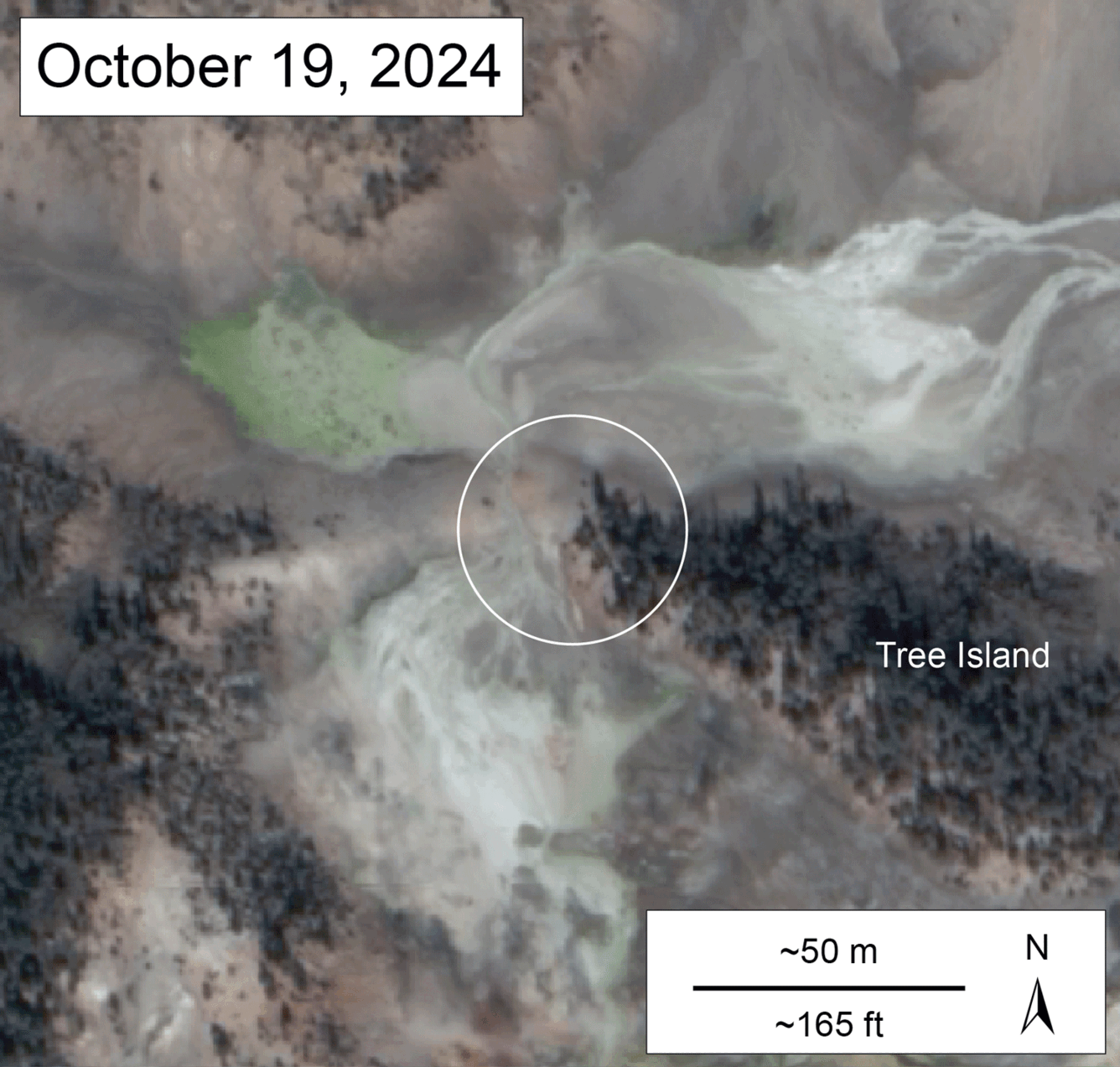In Yellowstone National Park, a hydrothermal explosion has formed a new hole, filled with chalk blue water that’s hotter than a warm bath.
A team of USGS geologists discovered the new pool in April 2025 within a smaller subbasin of Norris Geyser Basin, described as “the hottest, oldest, and most dynamic” thermal area in Yellowstone. Measuring around 4 meters (13 feet) in diameter, the hole is filled with warm water (about 43°C or 109°F) that rises to around 30 centimeters (1 foot) below the top.
Around its rim is evidence of its creation. The researchers found the surrounding was scattered with rocks covered in a fine dust, indicating it was blown open by a hydrothermal explosion.
These subterranean explosions occur when superheated water trapped beneath the surface builds up enough pressure to violently break through the overlying ground. They’re often triggered by factors like seismic activity, seasonal thaw, or the gradual weakening of rock by acidic hydrothermal fluids. When the stony cap can no longer hold, it bursts open in a blast of steam, launching debris across the surrounding area and forming holes in the ground.
It’s not especially surprising to see this activity in Yellowstone. The region is brimming with hydrothermal activity and new geological features are constantly popping up in the landscape.

Satellite images show the emergence of the new hole in Yellowstone towards the end of 2024 and start of 2025.
Image credit: Imagery processed by R. Greg Vaughan (USGS), and data were collected by the WorldView satellite system and made available thanks to the NEXTVIEW End User License Agreement between Maxar (formerly DigitalGlobe, Inc.), which supports Earth science research and applications (public domain)
The big question is: When did this newly formed hole actually appear?
To answer that, the USGS has a suite of tools at its disposal. Satellite imagery offers before-and-after snapshots to narrow down the timeframe, while geophysical data from on-site monitoring stations can reveal telltale signs of explosions, earthquakes, and other underground activity.
After some digging, satellite data revealed that there was no visible feature as of December 19, 2024. But by early January 2025, a shallow depression had formed. By February 13, the water-filled pool had fully developed into the feature visible today.
Meanwhile, data from nearby monitoring stations picked up several low-level acoustic signals coming from the direction of the new formation. The most prominent was recorded on December 25, 2024. However, it was relatively weak and, notably, wasn’t accompanied by any seismic activity – something typically expected from a major hydrothermal explosion. Similar faint acoustic signals were detected again on January 15 and February 11, 2025, but like before, there were no seismic counterparts.
In other words, Yellowstone’s newest hydrothermal feature likely made its dramatic debut on Christmas Day 2024 – like an explosive gift from the depths – followed by more rumbling activity in the weeks that followed.
Source Link: A New Hole Has Emerged In The "Hottest, Oldest, And Most Dynamic" Part Of Yellowstone National Park